



 Keeping North American Freight Moving
Keeping North American Freight Moving
These solutions are helping to make our transportation infrastructure safer and are helping railroads and their customers deliver resources and consumer products more efficiently and at a lower cost. Railinc is the largest single source of real-time accurate interline rail data for the North American railroad system.
At Railinc I love that I can use really interesting technology to focus on a problem and figure out, ‘How do we do this better?’
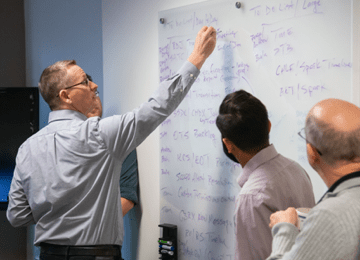


Location data is a critical component in a growing number of industry efforts related to asset management, energy management, incident management, and transportation management. 2019 marked the completion of Phase 3 of Railinc’s Location Management program roadmap, which advanced development of a centralized repository for railroad GIS information to support efforts aimed at increasing safety and network efficiency.
Accomplishments in 2019 included deploying the Rail Industry GIS (RIGIS) Portal, developed to enable the collaborative review and adjudication of railroad GIS data; delivering GIS data updates to the Clear Path Map™ to reflect recent changes in the Chicago terminal; and completing two studies related to railroad GIS data quality and event reporting location information.
“This is such an impressive system. I have been in Chicago for 12 years, and until I came to the CIROC, I never would have believed the degree of inter-carrier cooperation necessary to achieve what Railinc is doing.”
- ClearPath User
2020’s work will build on recommendations from data quality assessments performed in 2019 to develop strategic initiatives addressing common GIS data quality standards. Railinc will also continue to move forward with establishing an extensible framework to support emerging industry needs for location data and implementing change management processes between RIGIS and the Clear Path™ System to sustain critical application functionality for stakeholders in Chicago.
In 2019, Railinc completed the production deployment of Multi-Level Pool Billing Data Exchange (MLPB), a tool that enables railroads to reconcile its pool billable charges electronically and simplify invoice settlements by leveraging the Railroad Clearinghouse. The tool – which achieved 100 percent adoption – gives railroads the ability to make better, data-driven decisions as it accelerates and streamlines the billing process. In addition to its release, MLPB also introduced an exception management process flow that allows stakeholders to expediently address and resolve pricing discrepancies.
MLPB will further grow its exception management flow in 2020 by enhancing reporting capabilities, adding a business-to-business integration and continuing to add edits. Railinc will also begin development on a time standardization process for repairs using the application.
As the freight rail industry works toward eliminating inefficiencies and increasing equipment velocity through regulatory modernization, Railinc is focused on identifying ways its applications and systems can be used to support the implementation of a more modernized railcar inspection regimen. Providing accurate, timely rail car mileage information to shippers is an essential building block for progressing regulatory changes, and in 2019 Railinc worked to improve data quality by building a new model for calculating mileage that uses an innovative and intuitive algorithm to make calculations. Due to this year’s success in improving the accuracy of mileage reports, railroads will be able to make better informed operational decisions during block swapping. The electronic air slip is projected to realize $75 million annually in cost savings for the industry.
“In order to help successfully track individual cars and their mileage from last inspection, Railinc is a critical solution partner. The benefits of leveraging Railinc to store, calculate and share this vital car information is monumental for the Class I’s in our train scheduling process. We are excited to work with Railinc for this industry solution.”
- Joe Kerber, BNSF
In 2020, Railinc will begin comparative analysis studies with several Class I railroads to pinpoint mileage tracking discrepancies and dissect the source of error, determining whether it’s algorithmic or tracking-based and how to circumvent it. The project will also look to include Class II and Class III short line railroads in its efforts by the end of the year.
Today, the future of the industry looks to be even more reliant on accurate data, intelligent devices, and automation. Railinc is working to position itself as a critical industry partner in that future.
Railinc’s growing investment in advanced analytics and modern data science technologies is positioning the company to be able to tackle future complex challenges with innovative, data-driven solutions. The potential is pronounced – in 2019, by introducing big data engineering and AI into an existing mileage standardization project, Railinc was able to identify previously undetected sources of error and deliver statistically significant improvements over existing mileage estimates. By maturing our data sciences program, Railinc will be able to use new tools and build stronger applications that utilize big data processing to provide value to the railroad industry.
“At Railinc, we’re excited to support the industry’s ongoing efforts to enable predictive insights through the deployment of artificial intelligence on scalable cloud infrastructure. In 2019, we took some big steps toward enabling better decision making through industry data, and our team is driving hard to get to more results in 2020.”- Chris FustingRailinc Lead Data Scientist
From agility and cost-saving benefits to application modernization capabilities, there’s opportunity to be harvested from embracing cloud computing. Following 2019’s work to set a foundation for our future cloud-focused initiatives by creating a cloud application migration multi-year roadmap, Railinc will spend the next several years focusing on migrating most of its industry applications to the cloud and start to leverage cloud-managed services.
What gets me out of bed every morning is working with a team of really dedicated, intelligent people.
These solutions are helping to make transportation infrastructure safer and are helping railroads and companies deliver resources and consumer products more efficiently and at a lower cost. Railinc is the largest single source of real-time accurate interline rail data for the North American railroad system.
This project increased industry efficiency by supporting Class I railroads with updated Asset Health industry data to address repairs across repair locations. Additional efforts also improved bad actor identification, and advanced the collection and analysis of single car air brake test data to further understanding of specific brake system issues over time.
This project supplemented a move to a more modernized inspection regimen that increases equipment velocity and service levels for shippers through support for the collection and mileage tracking of Class I inspections on freight equipment.
This project completed originally envisioned work to fully standardize and share wayside detector data, data summaries, and equipment alerts. The platform will continue to support future wayside detector requirements.
This project enabled the IQ platform to continually monitor detector data and inform detector owners of potential issues such as sensor failures and false reads, by expanding the information feedback to detector owners through new data validation capabilities.
This project designed for industry technology-driven train inspection standards to be applied to existing and planned vision systems. It developed standards to define applicable automation levels and processes to manage network coverage.
This project supported reductions in derailments and mechanical service interruptions by acquiring new component defect data, and enhancing methodologies and data analysis for identifying causes for component failures.
This project increased efficiency by converting the current paper-based billing process to one modeled on the electronic Car Repair Billing system. Phase 3 work implemented additional edits and enhancements, provided an exception-handling workflow and provided a method to manage proprietary material and labor rates.
This project initiated enhancements to the Early Warning System to support easier access to equipment health data and support more informed operating decisions. The priorities identified in the 2018 assessment included modernizing alerts in the Railinc system and planning for the integration of those changes in customer systems through 2020.
This project extended EOTD owner visibility by enabling sharing of EOTD location for foreign devices on a handling railroad. Additional efforts progressed next-generation standards development for communications, hardware, inspection and repair, and asset management.
The 2019 Clear Path™ Value Expansion continues to increase velocity and efficiency in the corridor through complete integration of railroad dispatch data in the new message format, delivering enhancements to several components of the Clear Path™ System, and advancing improvements in lineup data quality.
The third phase of Railinc’s location management work supported collaborative efforts to improve safety and increase network efficiency through industry-wide GIS data sharing capabilities, including the rollout of the GIS change management solution, providing version updates to Clear Path and other industry applications.
Phase 2 of this effort to automate the settlement of EOT liability provides an interface for handling any exceptions remaining after the completion of Phase 1. Completion of all three phases resulted in a fully automated and centralized settlement process.
This accelerated RPSWC project supported a more efficient diagnostic process by providing a technology platform for railroads to request and receive the necessary data from other railroads to assist in Positive Train Control (PTC) interoperability. This project improved railroad operations, reduce support costs, and reduce train delay. A peer-to-peer data flow solution was designed in 2018 and developed in 2019 for all railroads that choose to integrate.
The 2019 ILM project centralized the PTC system release and documentation process to create efficiency and cost savings. A master workflow platform was developed to enable the industry to trace PTC standards requirements, and manage interoperable configuration items (CI) release dependencies and standards to eliminate non-functional system conditions – eliminating the need for every railroad to analyze every configurable item and requirement change in every release of the system.
This project shortened Unique Railroad Revenue Waybill Identification Numbers (URRWIN) settlement to 20 days (currently 30 days), creating a higher likelihood of settling before the month is out and supporting the receiving of funds more quickly.
Allows for more consistency in mileage data, supporting regulatory modernization efforts. This is achieved through improved data analysis, data quality and development work for utilization of movement and location events to achieve the electronic air brake slip (eABS) and mileage.
Allows the industry to prioritize critical maintenance work to reduce derailments by generating new derailment data streams and improving analysis of derailment data. This project will complete the electronic data reporting of MD-12 (axle) and MD-500 (side frame/bolster) data, work with the Wheels, Axles, Bearings & Lubrication Committee (WABL), Coupling Systems and Truck Castings Committee (CSTCC), and the Asset Health Strategy Committee (AHSC) to facilitate industry action when trending patterns of component and equipment failures are identified.
Improves the data quality for wayside detector data, which drives maintenance decisions to increase safety. This continues the work from 2019 – adding data validation capabilities to the inspection quality platform. The system will continue to monitor detector data and inform detector owners of potential issues.
This project will share images from machine vision systems to support and enable algorithm vendors to more quickly access images to develop new algorithms to address problems. This project will create a platform for sample images to be persisted, based on agreed standards.
This project will reduce MLPB monthly billing delays by automating exception handling, correcting data inputs, improving reporting and system edits and enabling pool operators to view multi-level rack asset health status.
Allows the industry to track cushioning unit changes and repairs, which improves repair visibility and component performance analysis. This project is capturing and reporting cushioning units applied to equipment working with the Equipment Engineering Committee and the Asset Health Strategy Committee.
Improves shop and repair efficiency by better identifying car and component issues through the early warning system. This project will continue railroad integration of Railinc system changes to alert systems that include equipment level tracking, location on car and prioritization of equipment alerts.
Delivers reduced cost and increased accuracy to EOT settlement participants by automating the process all the way through settlement in the Railroad Clearing House (RCH). Additional projects will improve EOT device visibility, which allows EOT managers to reduce EOT costs and increases EOT utilization.
This project will extend capabilities to share configuration, status, and defect information for foreign locomotives online as well as share PTC compliance and locomotive capabilities electronically as specified in bilateral run-through agreements (Phase 2 will include work to provide more detailed mechanical defect codes).
The 2020 Bad Actor Identification project allows the industry to reduce repeat line of road failures by isolating the equipment that requires repair. It also continues to work with the Brake Systems Committee (BSC) to enhance the algorithms that identify conditions that result in failures with no cause.
This project will complete work on existing Clear Path capabilities by leveraging data sources and solutions across the Clear Path toolset, ensuring the sustainability of the Clear Path System through the automation of change management and data quality measures and supporting improved user adoption and railroad business process integration in the Chicago Terminal.
Examines potential additional value enhancements for the Chicago Terminal, including: mobile device support, outbound data services and potential system integration of EDI 418s.
Supports initiatives that lead to regulatory modernization, customer visibility, and improved operational decision making. This project is a continuation of the multi-phased program to enable industry-wide GIS data sharing capabilities between Class I railroads, improve quality of GIS data and provision GIS sustainability to Class I railroads and other industry applications.
The 2020 ILM project will enhance the 2019 ILM master workflow platform to support interoperable PTC system release management, interoperable change management, interoperable configuration management and knowledge documentation. It will also include interoperable PTC requirements management and industry test management functions.
Increases velocity by allowing railroads to exchange the necessary diagnostic data with each other to assist in analyzing and solving PTC interoperable failure instances. The MAIN-CDX project provides a centralized data-sharing platform for all interoperable train control-equipped railroads. The 2020 project leverages the foundation established in 2019 with additional capabilities enabling railroads to push relevant PTC data to receiving railroads and augmenting PTC data with other industry system data. Additional integration methods, such as webservices, will also be made available to the industry.
Enhances efficiencies and cost savings by simplifying the communications process between railroads and equipment owners. This is the second project phase of three for developing a new loading authority system that's in accordance with the new AAR Circular, OT-57. The project will allow for communications between railroads and equipment controlling entities or equipment owners and improve the interaction with the industry's contact management system, FindUs.Rail.
This project will update the forward and store system to be compliant with the EDI 8010 rail standard, which allows the industry to utilize industry-requested changes and federal regulatory requirements to the EDI 417 (waybill) and EDI 421 (trip plan) message types. The changes are collected over a two-year period from the industry to meet changing business needs and improve communications between carriers.
Creates cost savings through electronic data sharing. This project will expand the usage of the file sharing platform known as the Rail Document Interchange (RDI) into the Freight Loss Data Exchange (FLDX) to turn it into a paperless process.
Enhances ease-of-use and contributes cost savings through electronic data sharing. This project will enhance the Rate EDI Network (REN) application to increase the automated flow of rate data between industry partners, including short lines.
Our talented Data Scientist, Business Analyst and Technical Teams all came together to focus in like a laser on eABS, which is an extremely important industry initiative. It shows the collaboration we have at Railinc, where these different people all brought their passion, tenacity, skills and high IQ’s to develop an innovative solution to a complex problem that should pay dividends for years to come.
We work hard to understand our customers’ pain-points and goals, and then we develop world-class solutions to address those needs. In 2020, the group will continue to work closely with customers and use the insights generated to improve our current offerings and to find completely new growth areas. We are very excited about our Car Repair Management System (CRMS) and about our advanced data science capabilities.

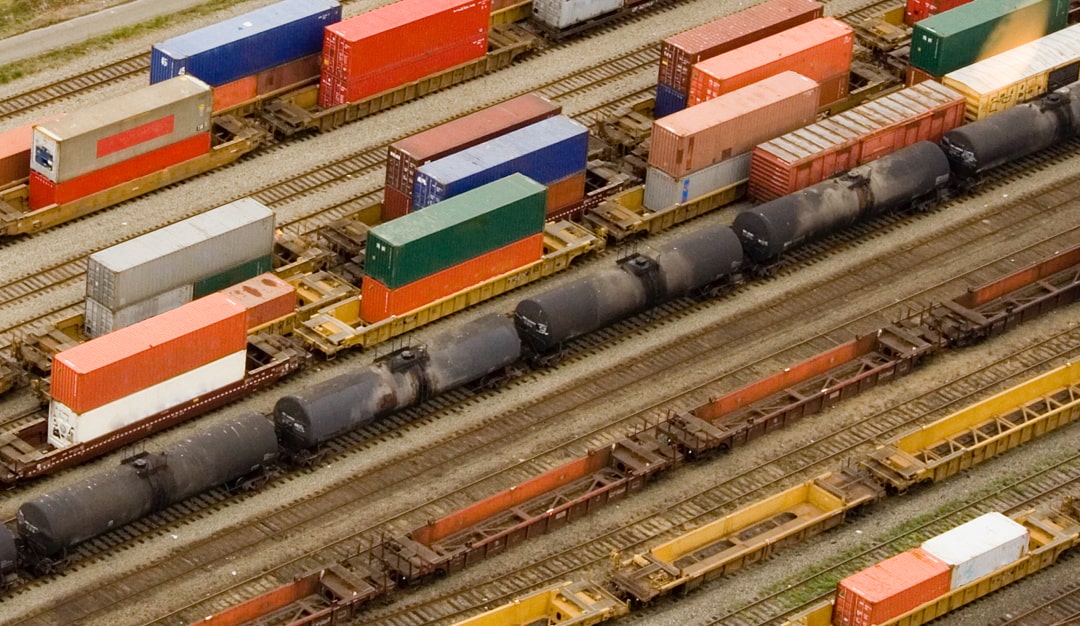
Railinc’s Car Repair Management Services (CRMS) provides an automated service that ensures companies that maintain their own asset management system remain compliant with AAR rule changes. CRMS is also used by regional railroads as a complete car repair solution. The products’ goal is to increase customer margins and productivity by automating repetitive tasks, and continually adding new features to expedite yard processes, provide analytic reporting, and move cars quickly from inbound inspection to release to service. In 2019, a second Class I railroad integrated to Railinc’s Car Repair Management Services.
Line of Road Failures Prevented with Help from New Bad-Actor Algorithms
Updates in Umler During 2019
Average Number of Air Slips Reported to Railinc Daily
Rail Equipment Registered in Umler
Daily Railcar Movement Events Received from Railroads
Messages Processed Through Railinc Messaging Service in 2019


Thank you guys for all your support on my requests. So glad and proud to work with you.
Railinc's customer support and knowledgeable staff is critical for the railroad industry in Canada, USA, and Mexico.
Railinc’s business is keeping the businesses of North America on track and moving forward. Our contribution to the safety and efficiency of the freight rail fleet gives Railinc employees a strong purpose for the work they do every day. Watch this video to hear what that means to them and why they love working at Railinc.
“It feels fantastic that what we’re doing is having a positive impact on other people’s lives.”- Robert ReddRailinc Sr. Release Engineer
 E. Allen West
President and Chief Executive Officer
E. Allen West
President and Chief Executive Officer
 Yates Parker
Vice President, Operations and Chief Financial Officer
Yates Parker
Vice President, Operations and Chief Financial Officer
 Treadwell Davison
Vice President, Strategy and Central Services
Treadwell Davison
Vice President, Strategy and Central Services
 Steve Hinkson
Director, Corporate Communications
Steve Hinkson
Director, Corporate Communications
 Cathelene Thomas
Chief of Staff
Cathelene Thomas
Chief of Staff
 Joan Smemoe
CIO, Vice President of Information Technology
Joan Smemoe
CIO, Vice President of Information Technology
 Chip Summey
Director, Asset Services
Chip Summey
Director, Asset Services
 Mika Majapuro
Director, Product Management
Mika Majapuro
Director, Product Management
 Jerry Vaughn
Director, Interline Services
Jerry Vaughn
Director, Interline Services
Kathleen Brandt
CSX Corp.
Senior Vice President & CIO
Fred Ehlers, Chair
Norfolk Southern Corp.
Vice President, Information Technology & CIO
Wayne Godlewski
Kansas City Southern
Vice President, Operations Support & CIO
Ian Jefferies
Association of American Railroads
President & CEO
Muru Murugappan
BNSF Railroad
Vice President, Technology Services & CIO
Mike Redeker
Canadian Pacific
Vice President & CIO
Todd M. Rynaski
Union Pacific Corp.
Vice President and Controller
David Trent
Canadian National Railway
Vice President and Chief Digital Officer
E. Allen West
Railinc Corp.
President & CEO

Railinc Corporate Office
7001 Weston Parkway Suite 200
Cary, N.C. 27513
Railinc Customer Success Center
1-877-RAILINC
(1-877-724-5462)
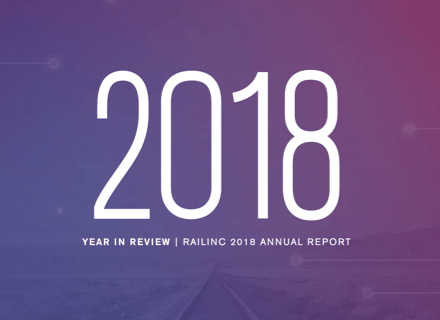 2018 Railinc Annual Report
View Online Now ›
2018 Railinc Annual Report
View Online Now ›
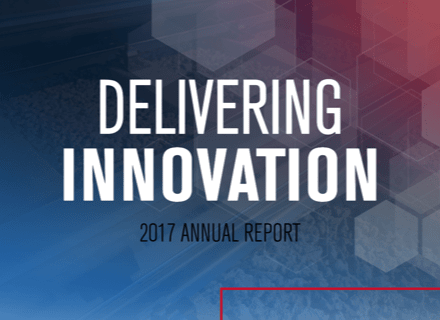 2017 Railinc Annual Report
View Online Now ›
2017 Railinc Annual Report
View Online Now ›
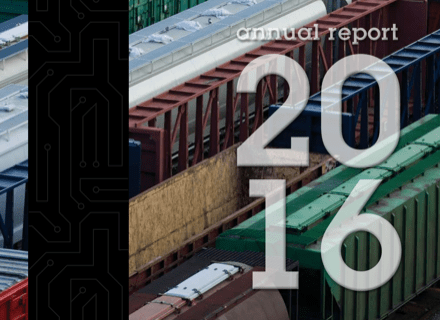 2016 Railinc Annual Report
View Online Now ›
2016 Railinc Annual Report
View Online Now ›
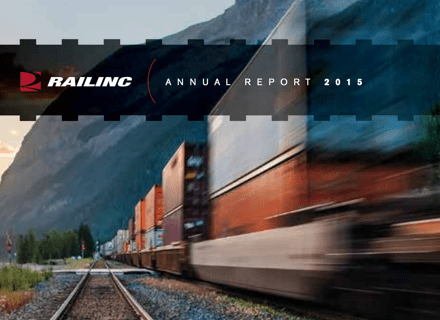 2015 Railinc Annual Report
View Online Now ›
2015 Railinc Annual Report
View Online Now ›